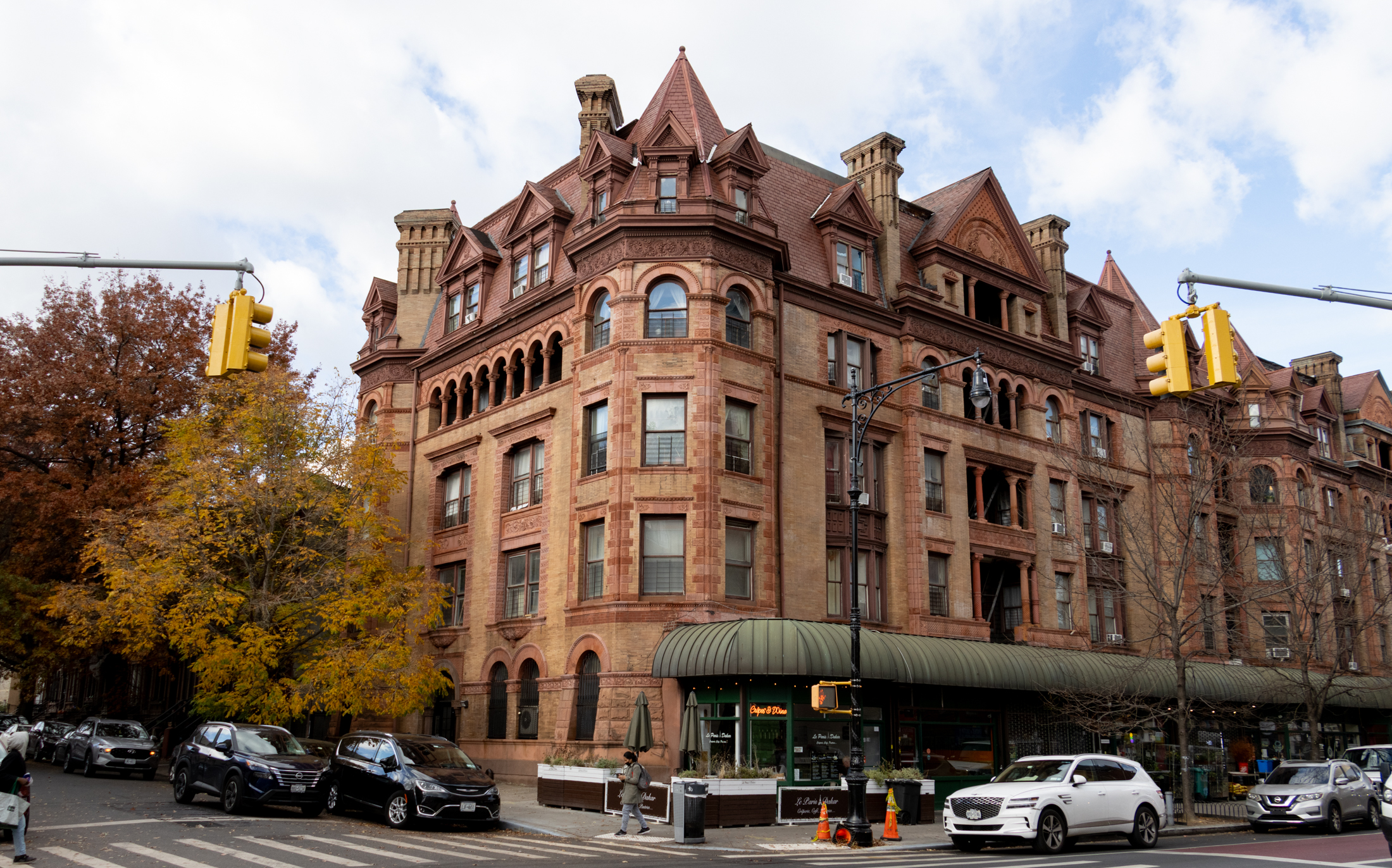AY Arguments Heard at Appellate Court
Appeal arguments in the Atlantic Yards case — 26 neighborhood and civic groups against Forest City Ratner and the Empire State Development Corporation — were heard at Appellate Court yesterday, and folks challenging the project seemed to feel optimistic about it. The plaintiffs “intently listened to the exchange between the five-judge panel and the attorneys…


Appeal arguments in the Atlantic Yards case — 26 neighborhood and civic groups against Forest City Ratner and the Empire State Development Corporation — were heard at Appellate Court yesterday, and folks challenging the project seemed to feel optimistic about it. The plaintiffs “intently listened to the exchange between the five-judge panel and the attorneys yesterday afternoon. They heard a judicial bench that was extremely skeptical of the ESDC’s rationale for its blight determination,” reads a DDDB press release. The defendants were required to prove that the area surrounding Atlantic Yards was blighted, and thus eligible to be snatched up under eminent domain, so the entire 30-minute argument focused on the definition of blighted (any talk of making an area blighted by way of demolishing it, as in the photo above?). Defendants squirmed when answering, and, wrote Atlantic Yards Report, “representatives of developer Forest City Ratner and the Empire State Development Corporation (ESDC), along with their clutch of attorneys, exited looking none too cheery.”
What Remains. Photo by horseycraze.





“”Norman Oder says that he is a critic not an opponent of the Atlantic Yards proposal.”
Just because he SAYS he’s not a critic doesn’t mean he’s being truthful! I’ve read the entire post, and in my opinion it uses a great deal of subjective language – not impartial reportage – to describe the events. I will agree that Mr. Oder, through his blog, seeks to compile a detailed picture of the issues and events surrounding the project, but in my opinion there is no question he’s personally against the project, and it’s quite evident. Also, who claimed there “was a large, silent pro-Ratner crowd?” at the meeting? I merely said I wanted to hear about the meeting from an IMPARTIAL source (which, if you think about it, would NOT include pro-AY people). It’s quite possible there were NO “pro-Ratner” folks at the meeting. Does that make Mr. Oder’s posts any more impartial? Not in my book.
“Norman Oder’s Web site [is] clearly in the anti-AY camp.”
Norman Oder says that he is a critic not an opponent of the Atlantic Yards proposal. You may not like what he says, but he is very thorough and is critical of all sides. If you want “unbiased” reporting, then you should at least read his full posting. You can judge for yourself.
There were no other reporters there, and the ESDC lawyers are not likely to post on this blog.
I would say this is telling. If there were a large, silent pro-Ratner crowd, why weren’t they attending the meeting?
I have attended nearly every Atlantic Yards hearing, and I have to say that this was one of the strongest. The panel of five judges seemed very skeptical of the state’s claim that the land that Ratner wants is blighted. At several points there was almost disdain in the judge’s statements, such as when one of them asked about the company that wrote the environmental review: “Has AKRF ever found an area NOT blighted?”
Norman Oder wrote that the state punted in its response, but I thought in a way the state made AKRF look even worse. The ESDC lawyer essentially said, “well, they don’t only study blight,” which I would interpret as meaning “yes, they always find blight when asked, but sometimes they are given other tasks.” I think the judge who asked this might have the same one who determined that the Columbia eminent domain case was tainted by AKRF’s conflict of interest.
Another judge asked of the ESDC whether their definition of blight could mean that they could condemn any property in New York.
There have been other instances of judges asking tough questions of one side and then ruling in favor of them, so the DDDB crowd is tempered in its optimism. I find it hard to temper my optimism in general, so I would say that it is quite likely that these judges will agree with the argument of DDDB and its dozens of community allies: The blight determination is capricious and arbitrary. It was not based on the legal justification of eminent domain, but on the desire of a private developer to get private profit at the expense of the public.
I am expressing my views as someone who was at the hearing.
By the way, the building where the hearing took place was beautiful, and I recommend attending something there just to look at the paintings on the walls.
I have to agree with previous posters – is there any independent, UNBIASED reporting of what occurred? Brownstoner, the Brooklyn Paper, and Norman Oder’s Web site are clearly in the anti-AY camp. Reports about facial expressions and perceived sentiment aren’t particularly revealing.
As noted on my blog, the lawyers for the ESDC have seemed happier after other court arguments. When a judge asked a direct question about AKRF, the ESDC attorney couldn’t answer it.
i used to live around there, and i’d say it was blighted. and scary.
The reality is that there was and will be very little “affordable housing” in that area WITHOUT AY. Without some great rent control deal, the market rate in the area is easily beyond “afffordable.” Take it from me as a past renter in the immediate area.
I don’t know what the quote “”representatives of developer Forest City Ratner and the Empire State Development Corporation (ESDC), along with their clutch of attorneys, exited looking none too cheery.” even means. I’m a litigator and I’ve never exited an appellate hearing looking “cherry”…even if the case was a slam dunk. It’s pretty irresponsible for you (Lisa) to post the DDDB/AY Report perspective as if it were a statement of fact. Lisa, were you in attendance?
“post is entirely based on DDDB’s press release and the AY report”
I agree that the coverage is sadly very biased. I read this same press released as if it was an objective perception. Very sad reporting indeed.